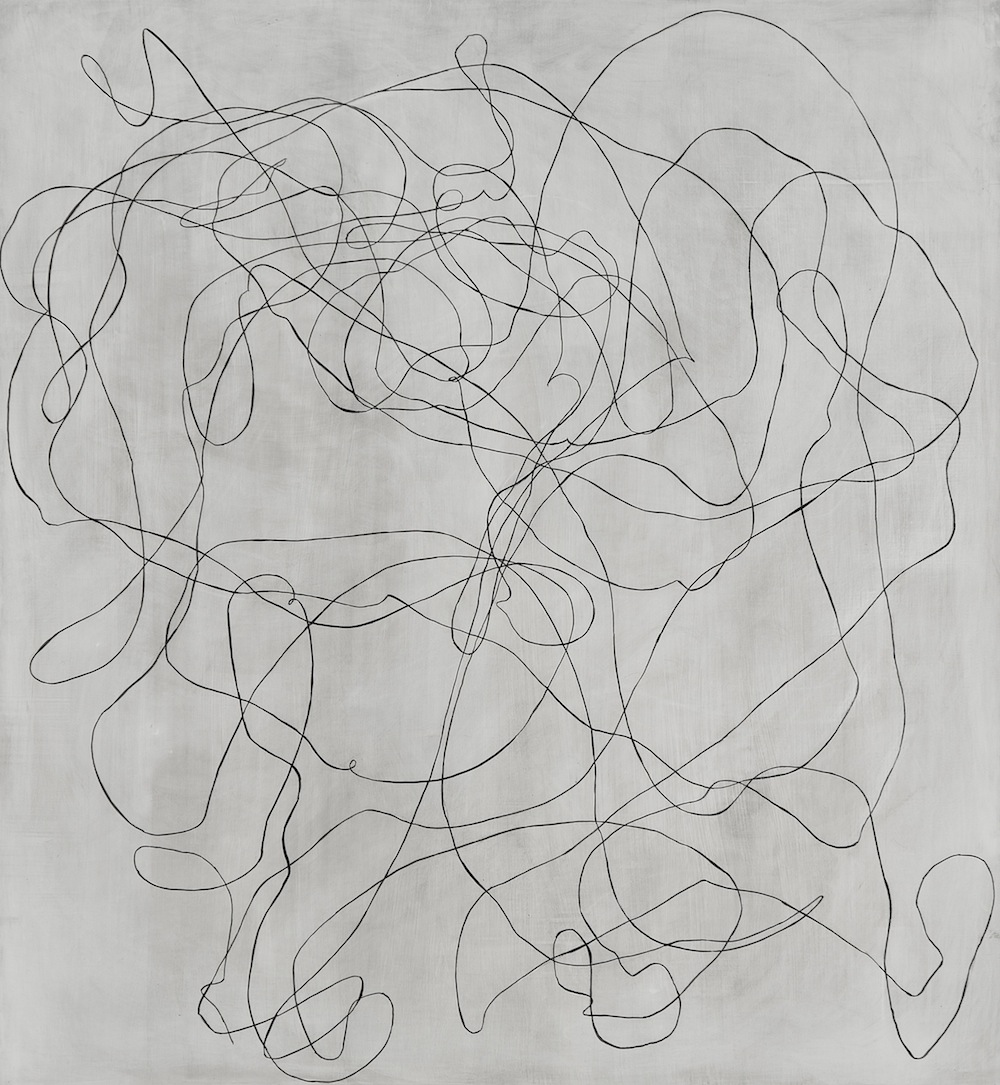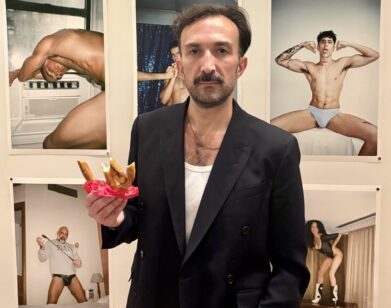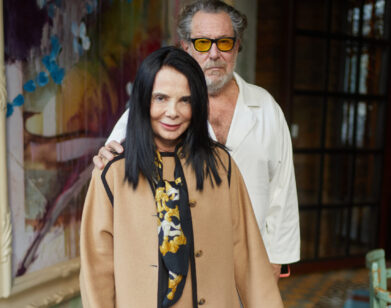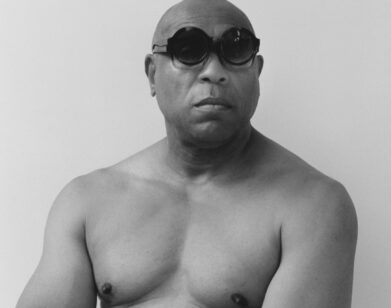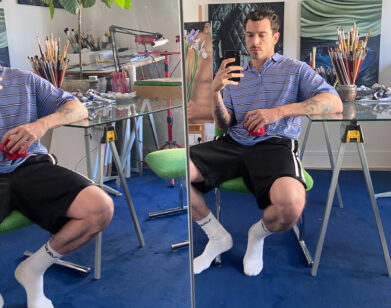Elliott Puckette and the Purpose of Paintings
Making beautiful paintings is rarely seen as an act of rebellion, but when Elliott Puckette began defining her aesthetic, painting denied popular convention. “It was a time when it was very uncool to paint,” she says. “Everyone was making video art and political stuff.” Luckily, then-emerging gallerist Paul Kasmin thought Puckette’s paintings were rather cool indeed, and over the past 15 years, Kasmin has exhibited Puckette’s work seven times. Given their history, it comes as little surprise that Kasmin chose Puckette for the inaugural show in his new Chelsea space, which opens this evening.
For Puckette’s latest series, the artist tried her hand at something new: sculpture. No, sculpture will not fill the gallery, which sits on the corner of West 27th Street and 10th Avenue. Instead, wire sculptures fashioned by Puckette herself served as the subject for a new series of paintings. The resulting works are awkward and visceral in appearance, but that isn’t to say that they aren’t still in the same vein of beautiful paintings that captured Kasmin’s (and the art world’s) attention years ago. As Puckette says, “Paintings are, ultimately, decorative.”
ALLYSON SHIFFMAN: For this new series, you make sculptures that you then paint, correct?
ELLIOTT PUCKETTE: They don’t really qualify as sculptures—it’s just me mucking around with some wire—but I use them as still lifes. I’ve been doing my own line for so long it was so nice to get away from that. It was unfamiliar but still in the same throw of the dice.
SHIFFMAN: Because it’s no longer your own line, do you feel more removed from the work?
PUCKETTE: No, actually. It was really an act of letting go of some of the control I always had.
SHIFFMAN: I imagine with your previous works, it was about knowing when a painting is done. In this case, is it more about knowing when the sculpture is done and ready to be painted?
PUCKETTE: It is, exactly. I didn’t want to muck around with them too much, because then I’d be composing. Obviously I’m an aesthetic person and I wanted it to be just so, but I tried to let it do its thing too.
SHIFFMAN: The word “decorative” always pops up in describing your work. How do you feel about that word?
PUCKETTE: The decorative critique… It’s such a damning thing. People are often afraid of making things that are beautiful; they have to make something that’s edgy or ugly. But people are going to say whatever they like—I just make the stuff.
SHIFFMAN: How did you first come to be showing with Paul Kasmin?
PUCKETTE: I met Paul through a friend in ’89. I was still in art school and he had just opened his gallery [in SoHo]. I thought he was great; his first show was Brancusi and it was absolutely beautiful. He needed someone to do inventory, which took me one day. Then he said [British accent] “Oh, don’t go away love.” And then I did a little bit more inventory and then I just sat there for a few weeks and we got to know each other. When I left art school, he came to my studio one day and offered me a show right there.
SHIFFMAN: And what was the conversation like when discussing this show?
PUCKETTE: When Paul and I talked about doing this show, he said, “Come to think of it, we’ve had a history of inaugural spaces.” When [the 10th Avenue] gallery opened, he showed my work for the first show, which was such an honor. He wanted to do a similar thing for this space, too. It looks big, but it’s actually quite a nice intimate space.
SHIFFMAN: What’s Paul like during installation?
PUCKETTE: He’ll nod a lot and make little noises. It takes about five minutes. All the paintings find their rightful places and we call it a day.
SHIFFMAN: Do you revisit your old paintings?
PUCKETTE: I do. It’s like seeing an old friend.
SHIFFMAN: What does your studio look like?
PUCKETTE: I’ve been there since ’89. It’s in DUMBO in one of the very few buildings that hasn’t been renovated. It used to be that you get in and out by rush hour or opt into getting mugged.
SHIFFMAN: Do you work on a schedule or when the mood strikes?
PUCKETTE: I’ve always had a schedule. I have kids now, so it can’t be all night long. You train your muse to show up.
SHIFFMAN: Do you get post show fatigue or depression?
PUCKETTE: Sometimes. It’s sad when you’ve had a crowded studio and then it’s like it’s a party and everyone’s gone. It’s like the Grinch has been in and there’s just a few hooks on the wall.
ELLIOTT PUCKETTE’S EXHIBITION OF NEW WORK OPENS TONIGHT, OCTOBER 8 AT PAUL KASMIN AT 297 10TH AVENUE, NEW YORK.

